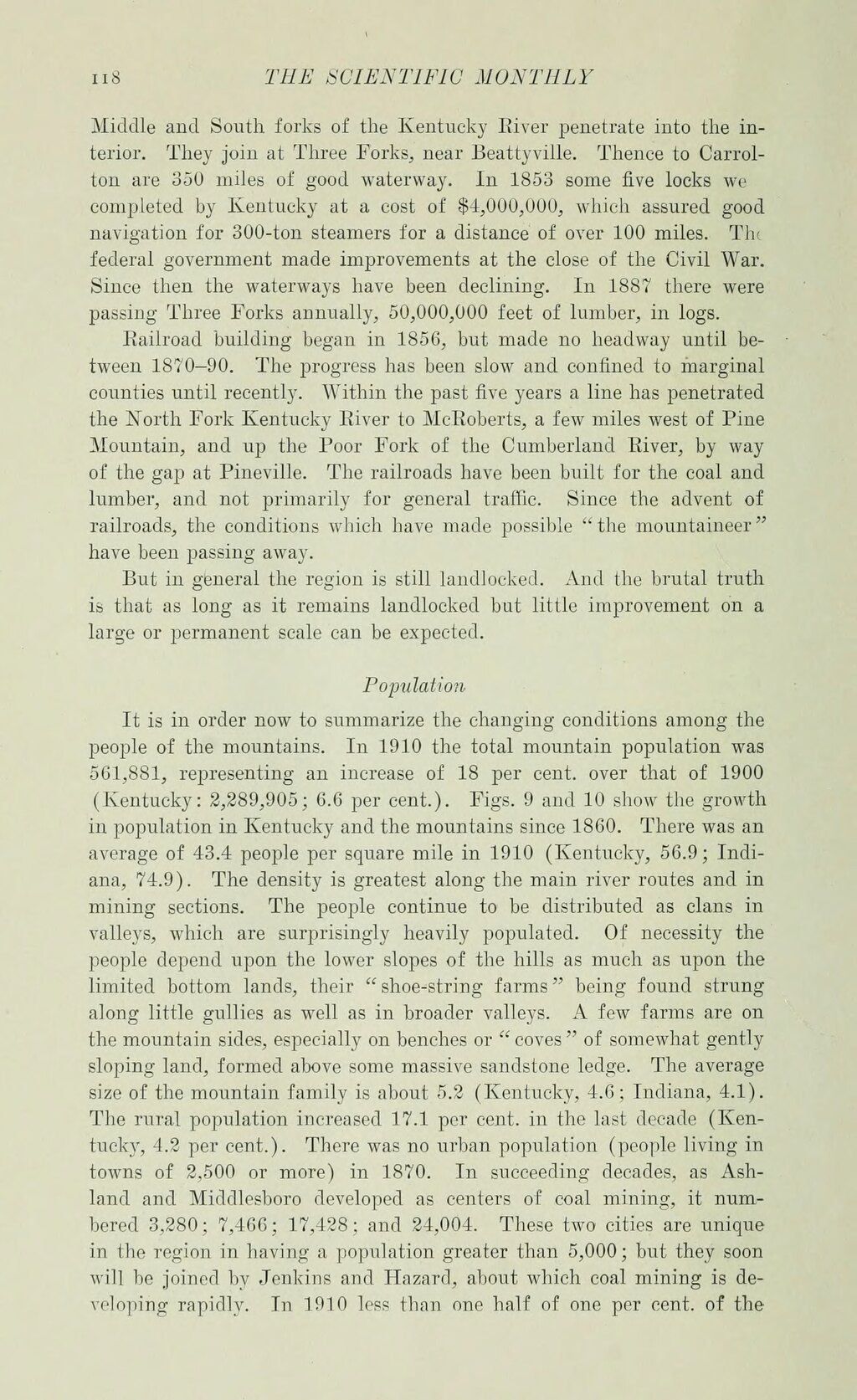ii8 THE SCIENTIFIC MONTHLY
Middle and South forks of the Kentucky liiver penetrate into the in- terior. They join at Three Forks, near Beattyviile. Thence to Carrol- ton are 350 miles of good waterway. In 1853 some five locks we completed by Kentucky at a cost of $4,000,000, which assured good navigation for 300-ton steamers for a distance of over 100 miles. Tlu federal government made improvements at the close of the Civil War Since then the waterways have been declining. In 1887 there wen passing Three Forks annually, 50,000,000 feet of lumber, in logs.
Railroad building began in 1856, but made no headway until be tween 1870-90. The progress has been slow and confined to margina counties until recently. Within the past five years a line has penetrate< the North Fork Kentuckv Kiver to McRoberts, a few miles west of Pin< Mountain, and up the Poor Fork of the Cumberland River, by wa; of the gap at Pineville. The railroads have been built for the coal an( lumber, and not primarily for general traffic. Since the advent o railroads, the conditions wiiich have made possible " the mountaineer have been passing away.
But in general the region is still landlocked. And the brutal trut is that as long as it remains landlocked but little improvement on large or permanent scale can be expected.
Poptdaiion
It is in order now to summarize the changing conditions among th people of the mountains. In 1910 the total mountain population w£ 561,881, representing an increase of 18 per cent, over that of 190 (Kentucky: 2,289,905; 6.6 per cent.). Figs. 9 and 10 show tlie growl in population in Kentucky and the mountains since 1860. There was a average of 43.4 people per square mile in 1910 (Kentucky, 56.9; Ind ana, 74.9). The density is greatest along the main river routes and i mining sections. The people continue to be distributed as clans i valleys, which are surprisingly heavily populated. Of necessity tl people depend upon the lower slopes of the hills as much as upon tl limited bottom lands, their "shoe-string farms" being found stnir along little gullies as well as in broader valleys. A few farms are c the mountain sides, especially on benches or " coves " of somewhat gent sloping land, formed above some massive sandstone ledge. The avera^ size of the mountain family is about 5.2 (Kentucky, 4.6; Indiana, 4.1 The rural population increased 17.1 per cent, in the last decade (Ke tucky, 4.2 per cent.). There was no urban population (people living towns of 2,500 or more) in 1870. In succeeding decades, as As land and Middlcsboro developed as centers of coal mining, it nui bered 3.280; 7,466; 17,428; and 24,004. These two cities are uniq^ in the region in having a population greater than 5,000; but they so< will be joined by Jenkins and Hazard, about which coal mining is d vel oping rapidly. In 1910 less than one half of one per cent, of t:
�� �
